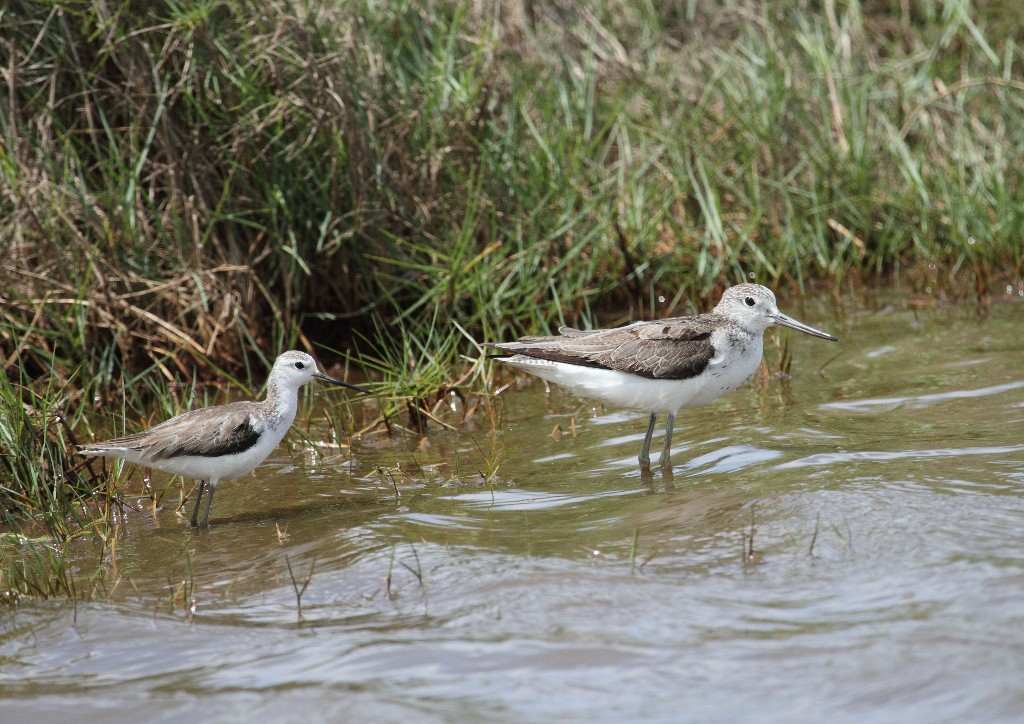Let me add a couple of wader comments.
1.Common Sandpipers almost constantly bob their tails.This feature is shared with Spotted Sandpiper which could conceivably occur - but would be easily over looked in juvenile or winter plumage.The long tail projection beyond the wing tips is a feature of Common Sand.
2.Common Sand has a very distinctive flight- flying close to the water with wings flicking downwards from the horizontal plane, intermittently gliding on bowed wings intermittently.
3.I think Green Sand looks most like Common Sand on the deck.Common Sand have the 'white wedge' near the shoulder breaking into the side of the body as shown here, this is all dark in Green Sand.
4.When looking at waders(as in most birds) try to get some idea of relative proportions , it is useful comparing them with nearby birds.This bird has short legs for its length.Here's a picture of Marsh Sand and Greenshank - highlighting that size and relative proportions matter. You just need to get your eye in.
5.I can recommend 'Shorebirds of the Northern Hemisphere ' by Chandler as an excellent book
E


[
Last edited by EricB at 21/10/2011 05:33 ]


